Oktoberfest Germany is a traditional folk festival that takes place every year in Munich, Germany. It started in 1810 as a public celebration of a royal wedding. Over time, it became a world-famous event known for its beer tents, local food, and Bavarian customs. The festival is held at Theresienwiese, a large open space in the city. It’s a joyful, open-air gathering filled with tradition, friendly crowds, and a real sense of place. If you are wondering how Oktoberfest is celebrated, this guide will take you through everything you need to plan your trip for 2025.
Quick Details For Oktoberfest Festival 2025
Location: Theresienwiese, Munich, Germany
Date: Saturday, 20 September to Sunday, 5 October 2025
Duration: 17 days
Tent Opening Time: 10 AM on weekdays, 9 AM on weekends
Tent Closing Time: 11:30 PM daily
Visitor Count: Around six million people expected
Best Time To Visit: Weekday mornings for fewer crowds
Facts About Oktoberfest Germany
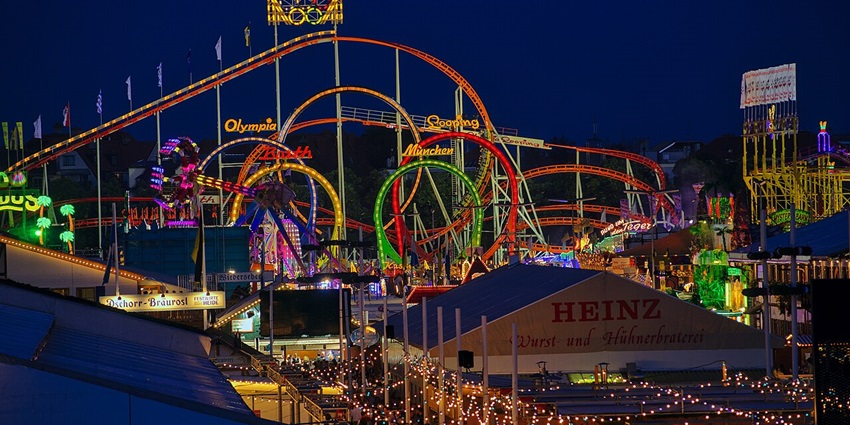
Photo: Jan Czeczotka / Wikimedia Commons
- Oktoberfest started on 12 October 1810 as a public celebration of the marriage between Crown Prince Ludwig and Princess Therese.
- The festival grounds, Theresienwiese, were named in honour of Princess Therese.
- The original event featured a horse race, which later became a tradition for many years.
- Only six breweries are permitted to serve beer: Augustiner, Paulaner, Hacker-Pschorr, Hofbräu, Löwenbräu, and Spaten.
- These breweries make a stronger Oktoberfest Märzen beer, around 5.8% to 6.3% alcohol by volume.
- Beer is served in 1-litre mugs, known as Maßkrugs, made of thick glass.
- The entire festival spans around 42 hectares (over 100 acres) of open space in Munich.
- Every year, the event draws over 6 million visitors from across the world.
- In 2008, a waitress named Anita Schwarz set the Oktoberfest beer-carrying record by holding 19 full mugs weighing nearly 45 kilograms.
- The festival features more than 30 tents, over 140 food and drink stalls, live music, parades, and traditional costume events.
Suggested Read: Explore The Most Popular Festivals In Germany For A Cultural Delight
How To Reach
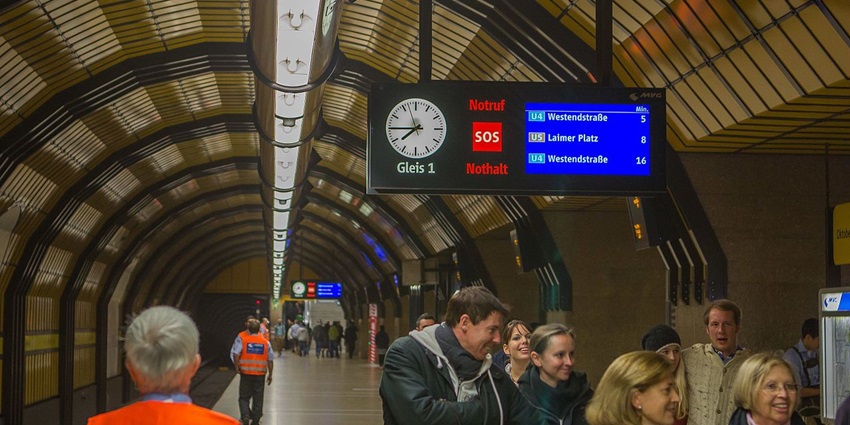
Photo: Poudou99 / Wikimedia Commons
By Air: The nearest airport is Munich International Airport (MUC). From there, take the S8 or S1 S-Bahn into the city centre. The ride to Hauptbahnhof takes around 40 to 45 minutes. From the station, take the U4 or U5 U-Bahn to Theresienwiese which drops you right near the festival entrance. Trains run often during the event, but mornings are less crowded.
By Rail: Munich’s Hauptbahnhof (central station) is a major hub with direct trains from all over Germany and nearby countries. From the station, Theresienwiese is one or two U-Bahn stops away. You can also walk there in under 15 minutes. If you’re staying in nearby towns like Augsburg, Nuremberg, or Salzburg, regional trains make same-day trips easy.
By Road: Driving is possible, but not ideal. Streets near the festival are closed or restricted, and parking is difficult. If you must drive, park farther out and take the U-Bahn in. Park-and-ride lots are available along most U-Bahn lines.
Timings, Admissions And Reservations
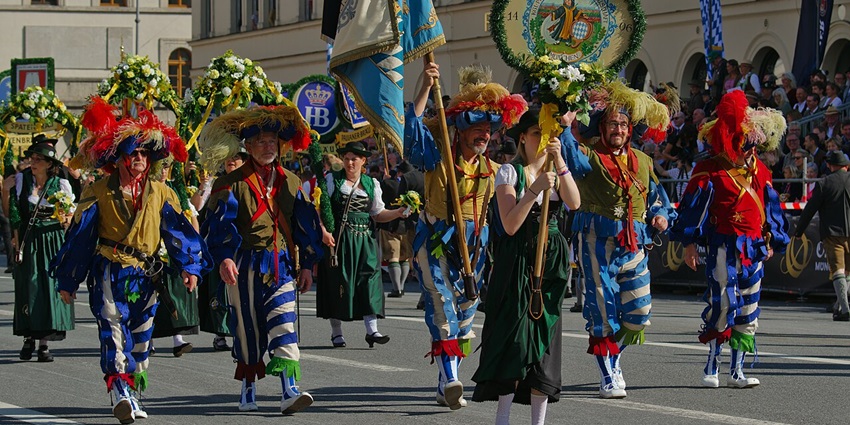
Photo: Jan Czeczotka / Wikimedia Commons
Opening Ceremony: Everything kicks off on the first Saturday at 12 noon. Inside the Schottenhamel tent, the Mayor of Munich taps the first beer barrel, marking the start of the festival with the famous shout, “O’zapft is!”
Beer Tent Opening Hours
Weekdays (Monday to Friday): 10 AM 0 11:30 PM
Weekends and 3 October (Public Holiday): 9 AM – 11:30 PM
Last Beer Orders: 10:30 PM
Extended Hours: Käfer Wiesn-Schänke and Weinzelt stay open until 1 AM, with final beer orders taken by 12:30 AM
Admissions And Reservations
- General Entry: Free for everyone. No ticket is needed to enter the grounds or the beer tents.
- Oide Wiesn: This section focuses on Bavarian traditions. It has an entry fee of €4 / ₹388, but children under 14 can enter free.
- Table Reservations: Not required, but they’re a good idea for large groups or evening visits.
- Booking: Reservations are made directly through each tent. Most tents begin accepting bookings around April.
- Costs: Booking is free, but you need to buy vouchers in advance. These usually include two litres of beer and half a roast chicken per guest.
Suggested Read: Theme Parks In Germany For Non-Stop Jaw-Dropping Adventure
Highlights And Must-Have Experiences Of Oktoberfest Munich Germany
Here are the must-experience activities while you attend Oktoberfest Munich Germany for the best times:
1. Tents
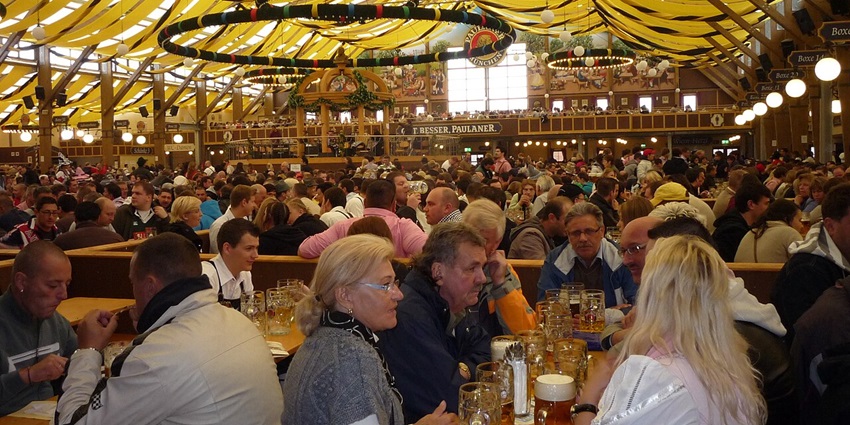
Photo: AK-Bino / Wikimedia Commons
The beer tents are the heart of Oktoberfest. Each one has its own crowd, flavour, and feeling. Some are packed with music and people singing on benches. Others are smaller, quieter, and full of locals who’ve been coming for years. Big tents like Hofbräu-Festzelt or Schottenhamel can hold around ten thousand people. Music comes from live brass bands and shifts into singalongs after sundown. Each tent serves beer from a specific Munich brewery, which gives it its own identity. Some are family-friendly, others are more inclined to the young and crazy energy.
2. Oktoberfest Beer
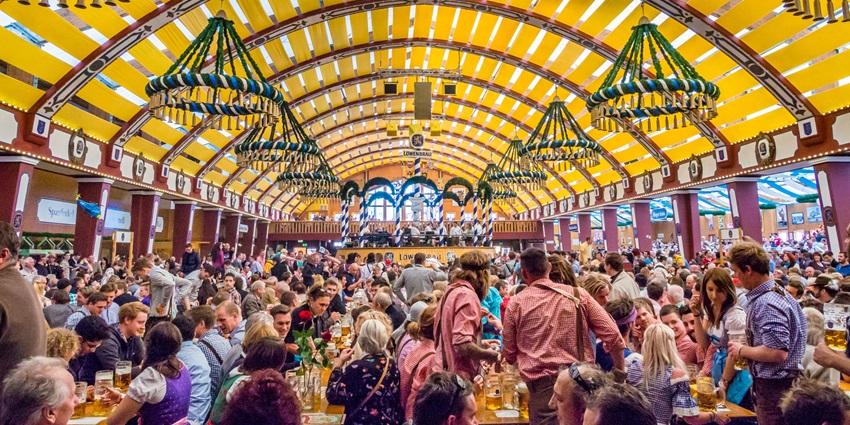
Photo: Takashi Images / Shutterstock
The beer at Oktoberfest Germany isn’t just strong; it’s made specially for the festival. Only six breweries are allowed to take part: Augustiner, Paulaner, Hofbräu, Spaten, Löwenbräu, and Hacker-Pschorr. Each one brews a version of Märzen, a smooth, dark golden beer that’s stronger than what you’d usually find in German pubs. What makes the beer even more special is how it’s served. Just cold beer poured fresh into one-litre glass mugs called Maß. In a few tents, like Augustiner, the beer still comes from wooden barrels, a detail you’ll notice in both the flavour and the foam.
Suggested Read: Germany Nightlife Hotspots That Will Keep You Coming Back
3. Oktoberfest Costume And Traditional Clothing
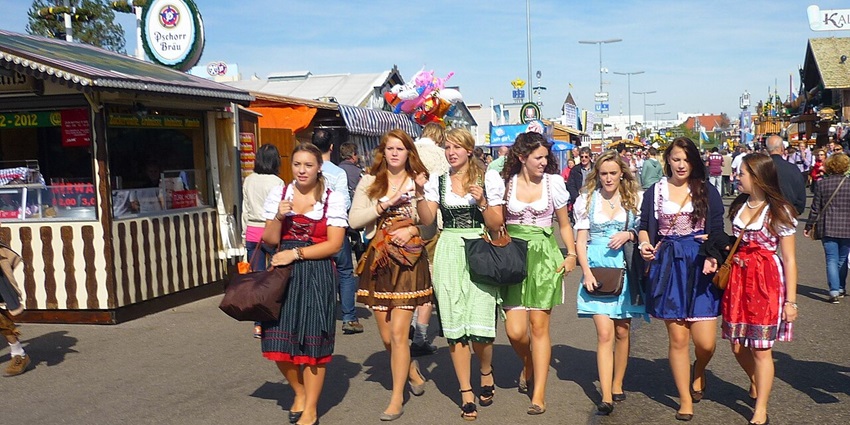
Photo: Bayreuth2009 / Wikimedia Commons
Men wear lederhosen, made from real leather, often passed down through families. They’re worn with checked shirts, wool socks, and sometimes a vest or hat. Women wear dirndls, with fitted bodices, puffed sleeves, full skirts, and aprons. They come in every colour and style, from simple cotton versions to hand-stitched ones with embroidery. One small detail matters more than most realise – the apron knot. If it’s tied on the left, it means you’re single. On the right means you’re taken. Tied at the back? That’s either for widows or waitresses. Locals wear them proudly, and visitors wear them to feel part of it all.
4. Oktoberfest Germany Originals
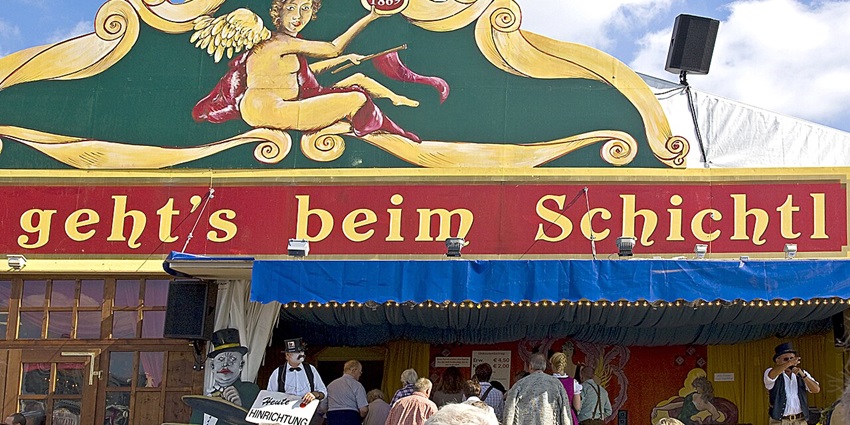
Photo: digital cat / Wikimedia Commons
Some parts of Oktoberfest have been around so long, they’re almost hidden in plain sight, but they’re what give the festival its true character. Schichtl is a tiny wooden theatre that’s been around since 1867. The main act is a bizarre magic-comedy show that ends with a fake guillotine execution. It’s weird, it’s old-fashioned, and it still draws a full crowd. Then there’s the Bavaria statue, towering over the festival. From the top, you get sweeping views of the fairgrounds and, on clear days, even the Alps.
Suggested Read: Monuments In Germany
5. Traditional Bavarian Food
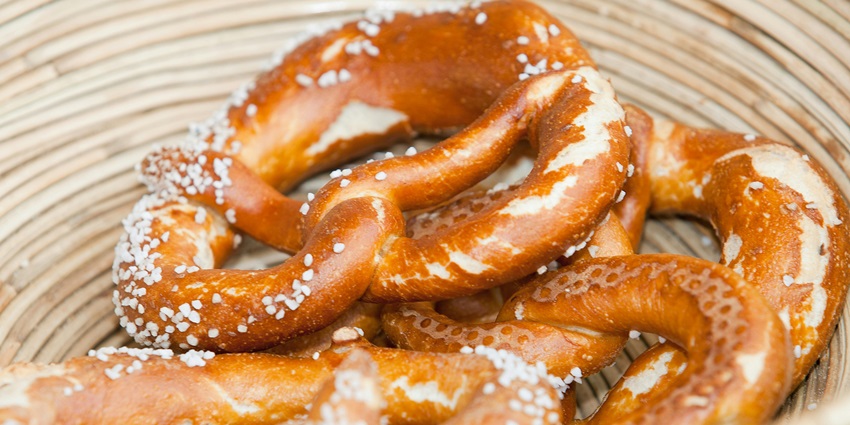
Oktoberfest is not just about beer but also about enjoying authentic Bavarian food. Visitors can savour giant pretzels, roast chicken, sausages, pork knuckles, and hearty potato dishes that perfectly complement the festive spirit. Food stalls and tents serve both savoury and sweet delicacies, making it a treat for every palate. From freshly baked breads to traditional desserts, there’s something for everyone. Tasting these dishes is a must-have experience, as they truly bring out the rich flavours of Bavarian culture.
6. Parades & Processions
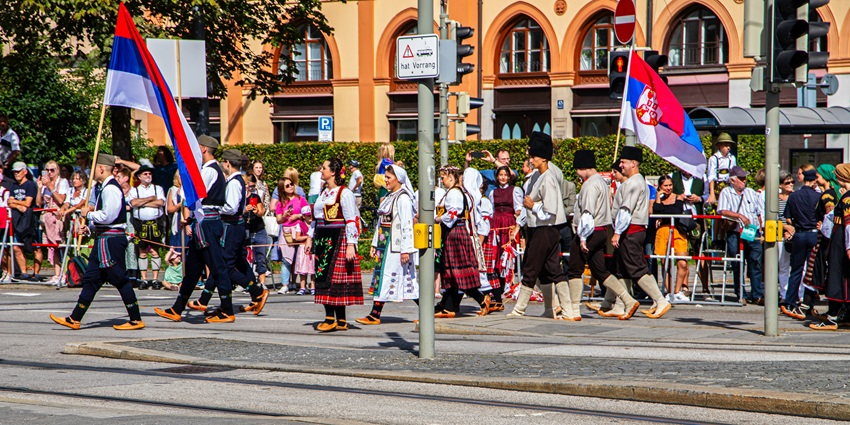
Photo: Walter Martin / Unsplash
The parades at Oktoberfest are one of the most colourful and lively parts of the celebration. Visitors can watch traditional processions featuring people dressed in costumes, marching bands, decorated horse carriages, and flag bearers. The grand opening parade sets the tone for the festival, followed by other lively marches showcasing Bavarian heritage and culture. These processions bring together music, dance, and tradition, making it a wonderful experience to witness. It’s a highlight that allows visitors to enjoy a true taste of local customs.
Suggested Read: Amazing Things To Buy In Germany From Souvenirs Gifts, To Lasting Memories
7. Fairground Rides & Attractions
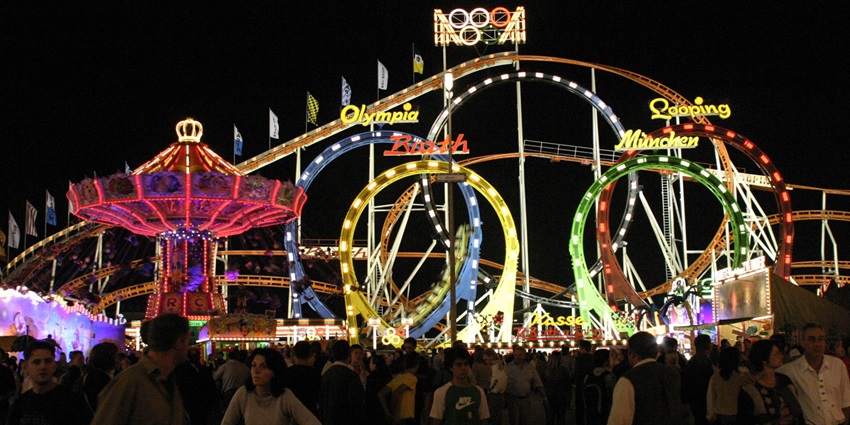
Photo: Bjs / Wikimedia Commons
Beyond beer and food, Oktoberfest offers plenty of fun with its fairground rides and attractions. Families and thrill-seekers can enjoy Ferris wheels, roller coasters, carousels, and other amusement rides spread across the festival grounds. There are also fun games and activities for children, making Oktoberfest an event that appeals to all age groups. The mix of exciting rides and a festive atmosphere adds to the charm of the celebration. Exploring the fairground is a must for those looking for more than just beer and music.
8. Traditional Bavarian Music & Dancing
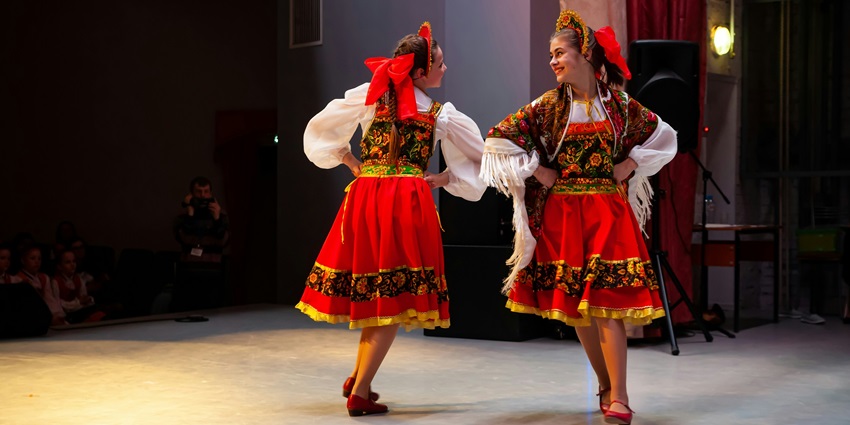
Photo: Daria Trofimova / Unsplash / Image For Representation Only
Music and dancing are at the heart of the Oktoberfest experience. Inside the tents, live brass bands play traditional Bavarian tunes along with popular folk songs that encourage visitors to sing and clap along. People often break into dancing, creating a lively and cheerful environment. The combination of music, laughter, and festive spirit brings everyone together, one of the best things to do in Germany. Experiencing the authentic Bavarian sound and dance is a must, as it makes the atmosphere of Oktoberfest truly unforgettable.
Suggested Read: Shopping In Germany For A Lively Hopping During Your Vacay
9. Oktoberfest Souvenirs & Keepsakes
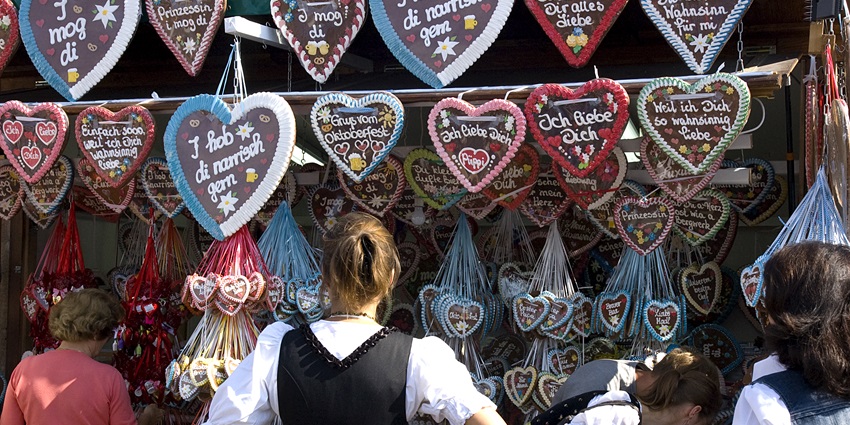
Photo: digital cat / Wikimedia Commons
Shopping in Germany at Oktoberfest is the perfect way to remember the trip. Visitors can choose from a variety of keepsakes such as traditional beer steins, gingerbread hearts, hats, and other handmade crafts. These items capture the charm of Bavarian culture and make for meaningful gifts or personal mementos. Souvenir stalls are spread across the grounds, offering unique collectibles that reflect the festival’s spirit. Picking up a keepsake is not only fun but also a way to carry a piece of Oktoberfest with you.
What To Eat And Drink In Oktoberfest
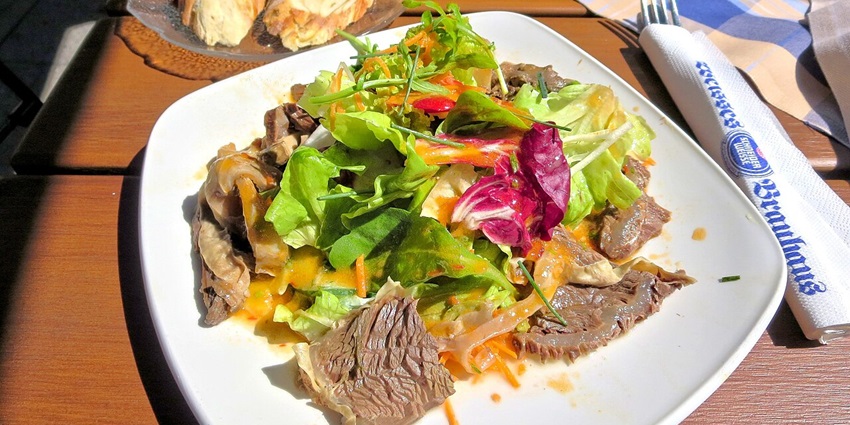
Photo: Bbb-Commons / Wikimedia Commons
Food and drink at Oktoberfest are central to the experience. Every tent has its own kitchen, and meals are served all day. The most popular dish is the ½ roast chicken (hendl), golden, seasoned, and perfect with beer. You’ll also find grilled sausages, pork knuckle, duck with red cabbage, and sides like potato salad or sauerkraut. Desserts aren’t hard to find, from warm apple strudel to dampfnudel with vanilla sauce, or the classic candied almonds sold in paper cones. Beer is served only in one-litre Maß mugs. For those who don’t drink beer, some tents like Weinzelt offer wine, sparkling wine, and even non-alcoholic options like soda or apple juice.
Suggested Read: Food In Germany
Where To Stay
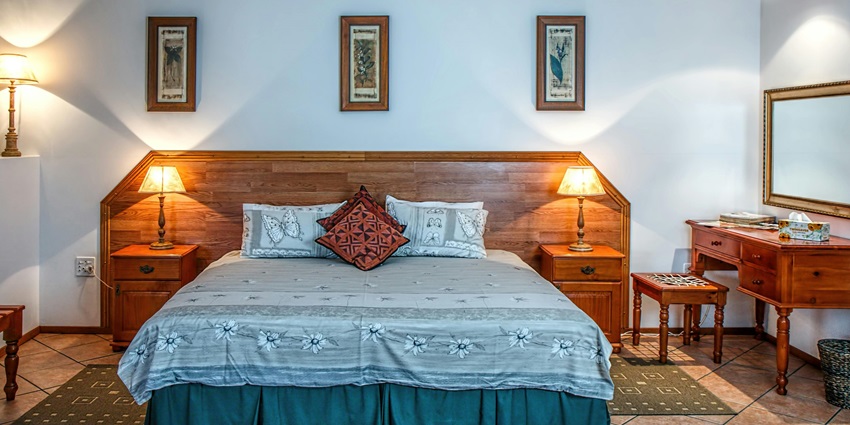
Photo: Pixabay / Pexels / Image For Representation Only
Oktoberfest Germany draws millions, so places to stay in Munich don’t last long. If you want to be near the action, look around Theresienwiese. Neighbourhoods like Ludwigsvorstadt, Isarvorstadt, or Schwanthalerhöhe are within walking distance and you also get a chance for best places to visit in Germany. Hotels here book fast and usually staying close means you don’t have to worry about catching the last train. For cheaper options, try districts like Giesing, Sendling, or Haidhausen. These areas are connected to Theresienwiese by U-Bahn. Hostels fill fast and prices go up as the festival nears. Some visitors go for package deals that include a bed, entry, and transport.
Tips For Travellers
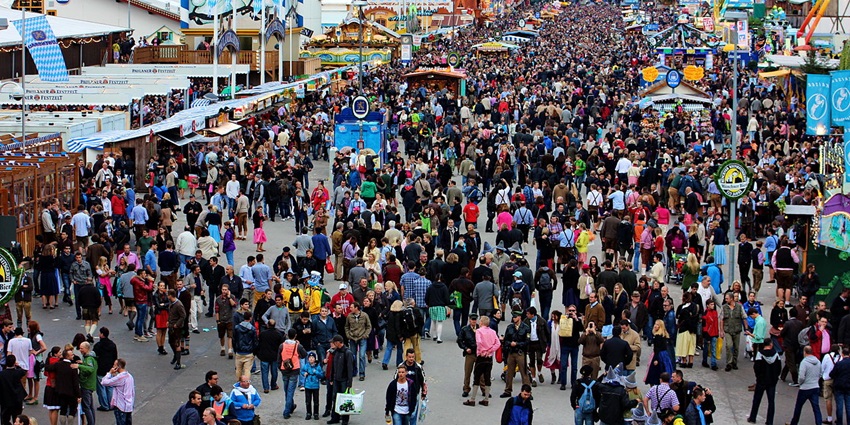
Photo: Usien / Wikimedia Commons
- If you’re going without a reservation, try getting to the tents before noon, especially on weekends, because by the afternoon most of them are already full, and it’s much harder to get a seat once the band starts and the crowd builds up.
- Carry enough cash with you since not every stall or tent accepts cards, and it’s just quicker to pay for snacks, drinks, and tips without needing to ask if they take digital payments.
- Wear closed shoes that can handle a mess, because the floors get wet, sticky, and sometimes slippery, and by the end of the day your feet will thank you for not showing up in sandals or anything open.
- Stick to a small bag or waist pouch, as large bags and backpacks aren’t allowed inside, and security will stop you at the entrance if it’s bigger than what’s allowed.
- Oktoberfest beer is strong, stronger than most expect, and because it’s served in litre mugs, it’s easy to drink more than you realise. It helps to eat in between and take your time.
- The U-Bahn is your best bet for getting there and back, especially late at night when roads are blocked off and taxis either take forever or charge more than they should.
- You can dance on the benches, no one will stop you, but the moment you step onto a table, security steps in. It’s one of those unwritten rules that everyone there knows.
Suggested Read: Islands In Germany
Oktoberfest Germany 2025 promises an unforgettable blend of Bavarian tradition, festive spirit and world-famous beer culture. Whether you’re visiting for the first time or returning for another round, this iconic celebration in Munich offers something for everyone. This ranges from vibrant beer tents and traditional outfits to hearty food and lively music. Plan ahead with TripXL, pack your bags and embark to an epic adventure at the world’s largest folk festival.
Cover Photo: Jan Czeczotka / Wikimedia Commons


 WhatsApp
WhatsApp
 Twitter
Twitter









